HAVANA—Installations by artists from around the world were exhibited at el Gran Teatro de Habana, one of the main Havana Biennial venues. Located in the central part of city, the exhibition space is adjacent to where the national ballet performs.
After climbing the stairs to the top/third floor of the structure, most people made a beeline for the Empire State Building-style standing binoculars that were a part of “Babel” by Argentinian artist Gabriel Valansi. The binoculars allowed viewers to see a magnified version of the all-black cityscape composed of computer parts.
View more coverage of the 11th Havana Biennial.
All photos by Arts Observer

Above, “Caribbean Hurricane,” 2011 by Jean-Francois Bocle (Martinique). Top of page, “A Room to Pray,” 2008 (fiberglass, LED screens, steel, Plexiglass) by T.V. Santhosh (India).
More about “Room to Pray” from the Asian Art Archive: The work “deals with the history of violence , implications of terror and its inherent complexities involved. His works pose questions at recent political issues of hate theories and belief systems that problematize the notions of progress and its side effects. He constructed a room with walls out of hundreds of bones and the floor with LED panels that looks like a burning carpet which reads a touching story of a victim of violence.”
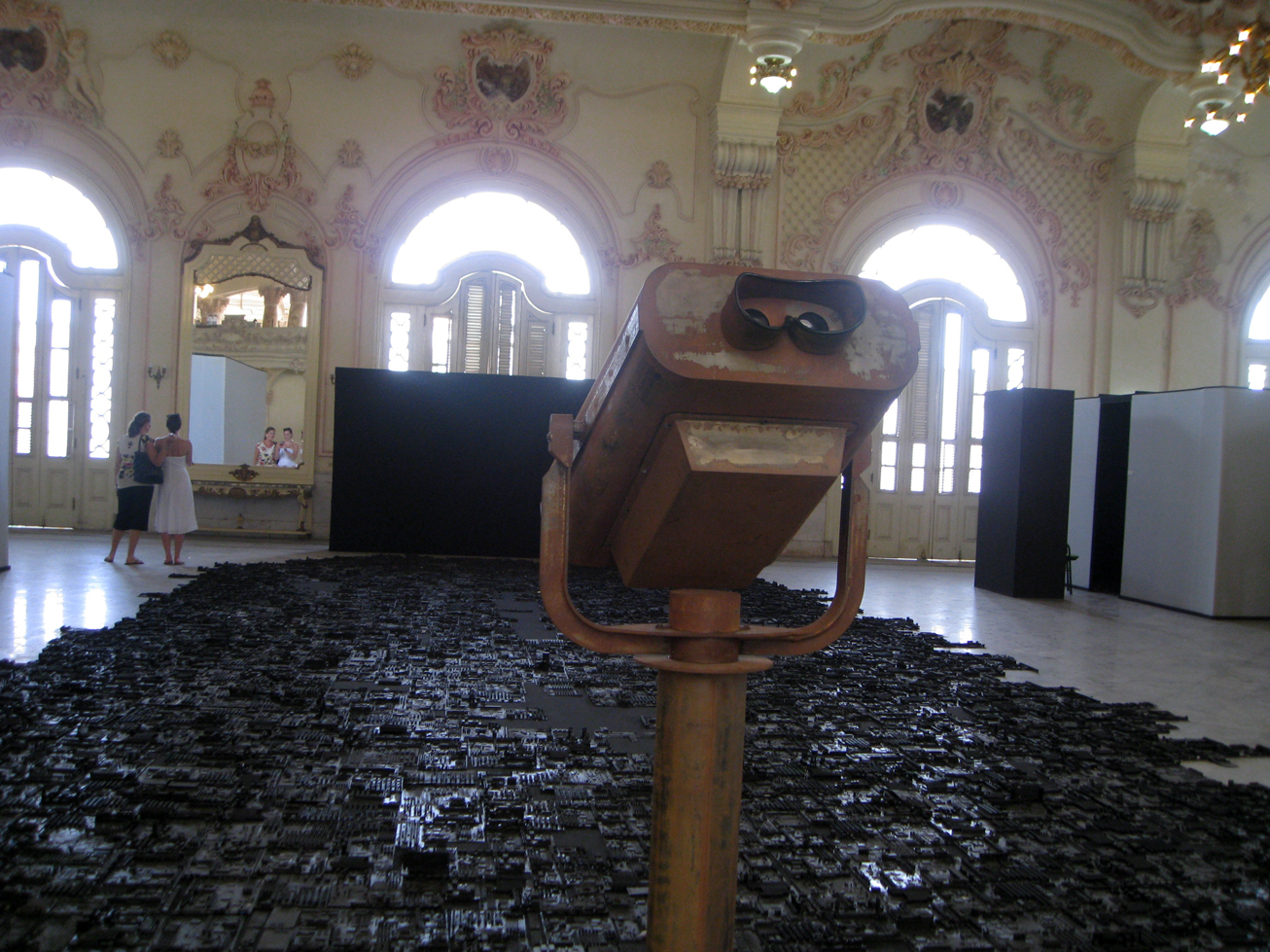
Installation view of “Babel,” 2011 by Gabriel Valansi (Argentina).
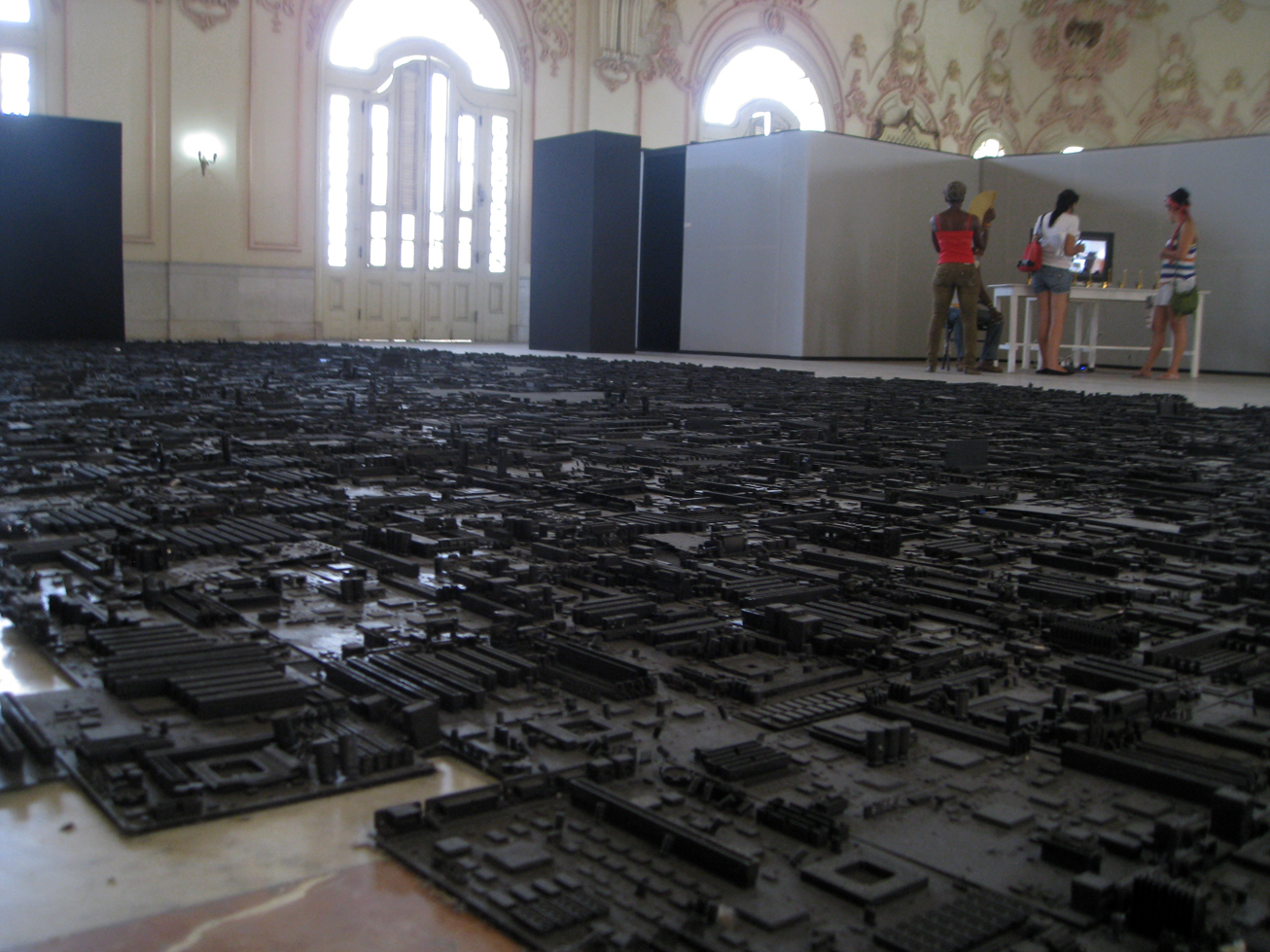
Detail of “Babel,” by Gabriel Valansi shows cityscape composed of computer circuit board parts.
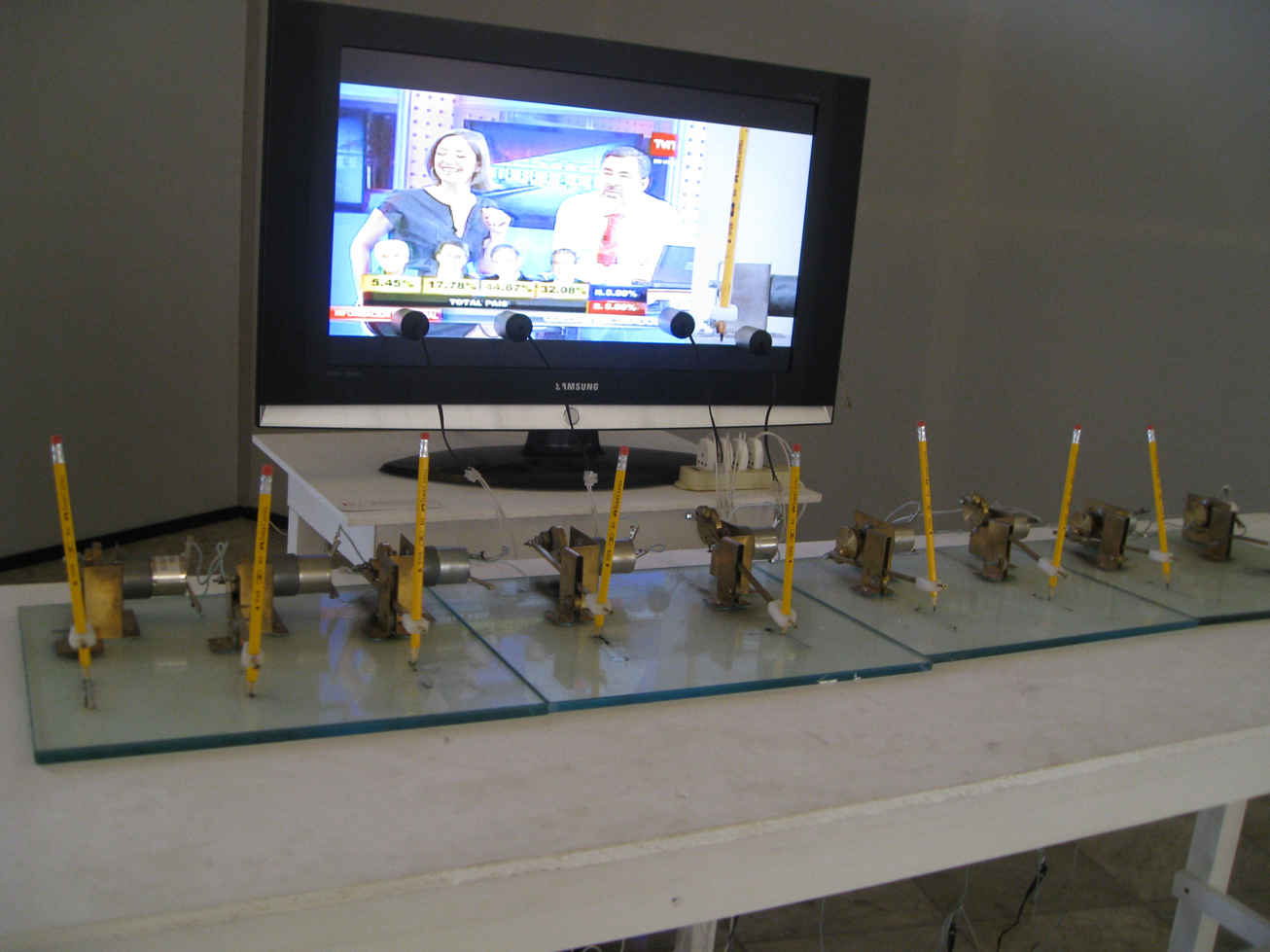
“Las mesas de Chile: La musica secreta de las elecciones,” 2009 by Pablo Langlois (Chile). The name of the installation means something like “the tables of Chile: the secret music of elections.”

“Alta Gogo,” 2011 (photographs) by Andrew Esiebo (Nigeria).
Esiebo describes the photo series on his website: “‘Alter Gogo’ is a diptych portrait series featuring a group of grandmothers who are members of the Gogo Getters Football Club in Orange Farm, South Africa. For them, playing football is more than a recreational activity; it’s also had a profound social and physical impact on their lives. In a community plagued with social and physiological problems like high unemployment, crime, alcoholism, diabetes and high-blood pressure, football serves as a salve. And all too often in collective imaginary, African women are located in the sphere of tradition and oppression, especially when they reach old age. With the grandmothers’ regalia and their proud postures both on the pitch and at home, “Alter Gogo” creates a powerful socio-cultural scenario in which soccer is the means and expression of a new gender and generation identity.
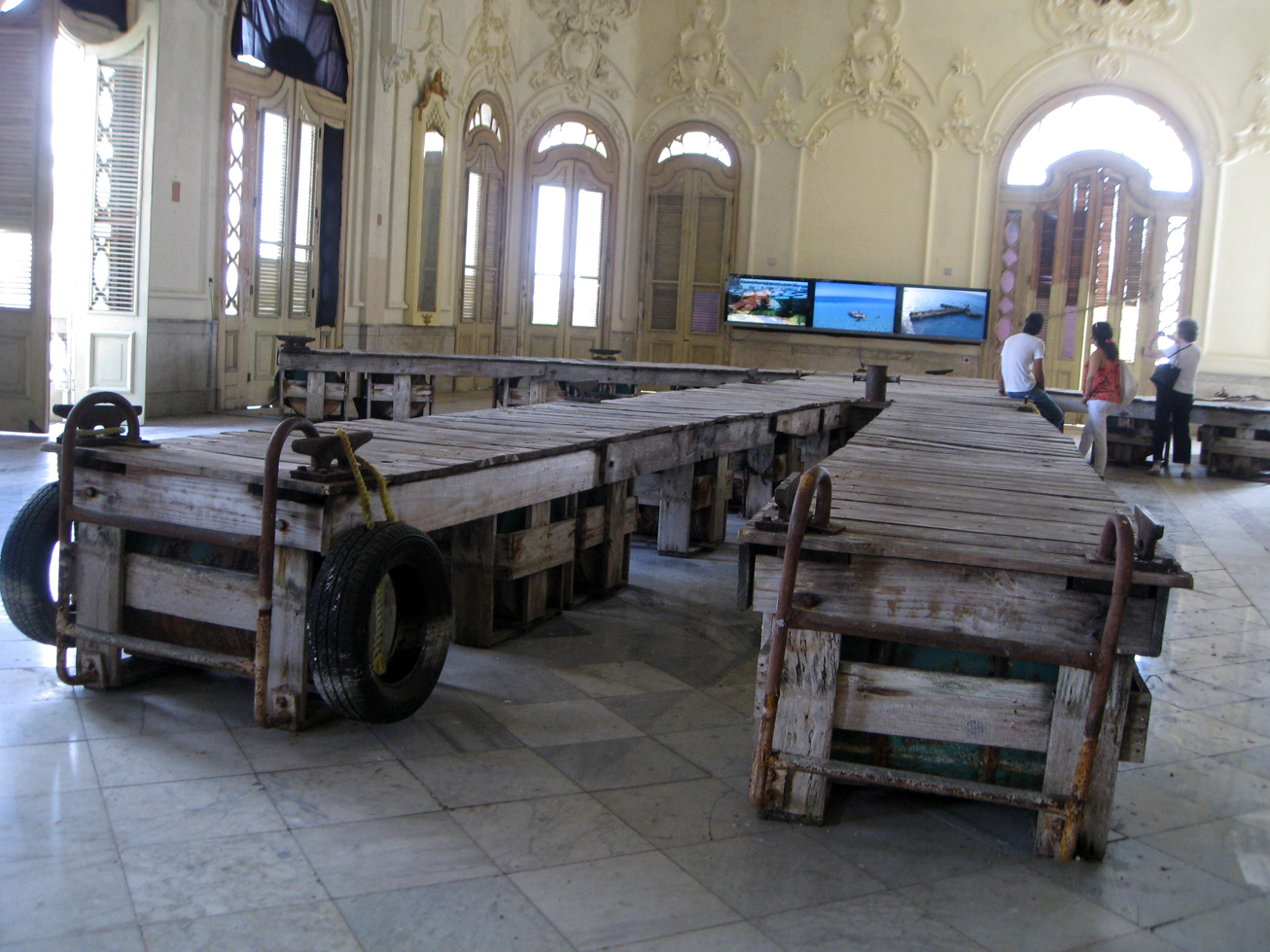
Above and below, “El David,” 2009 (wood, metal, rubber tires, rope) with accompanying video of the work at sea by Alexis Leyva Machade (Cuba) who is also known as “Kcho” and is founder of Kcho Estudio.
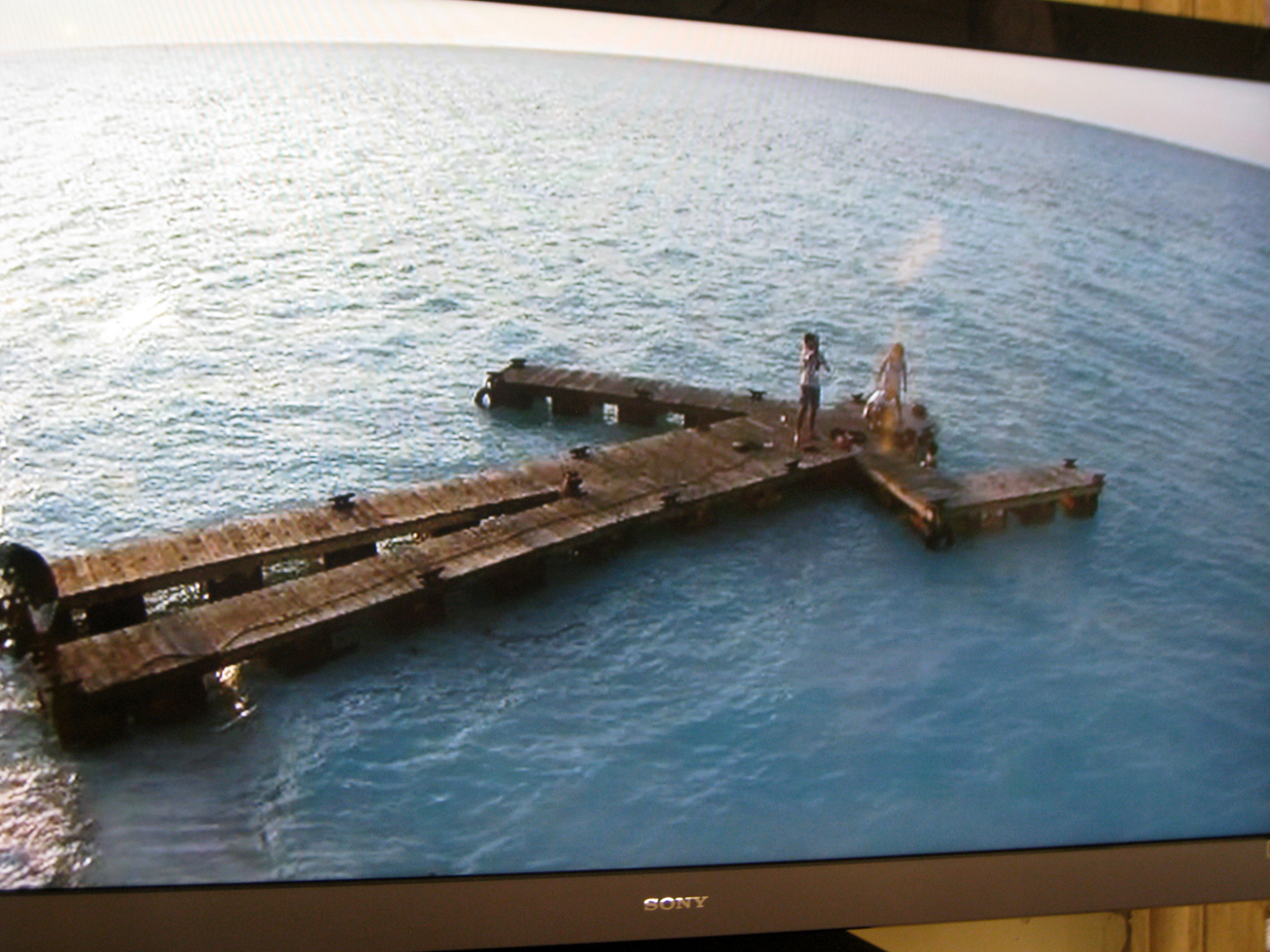
Video of “El David” by Alexis Leyva Machade. The wood barge is in the form of a human being.
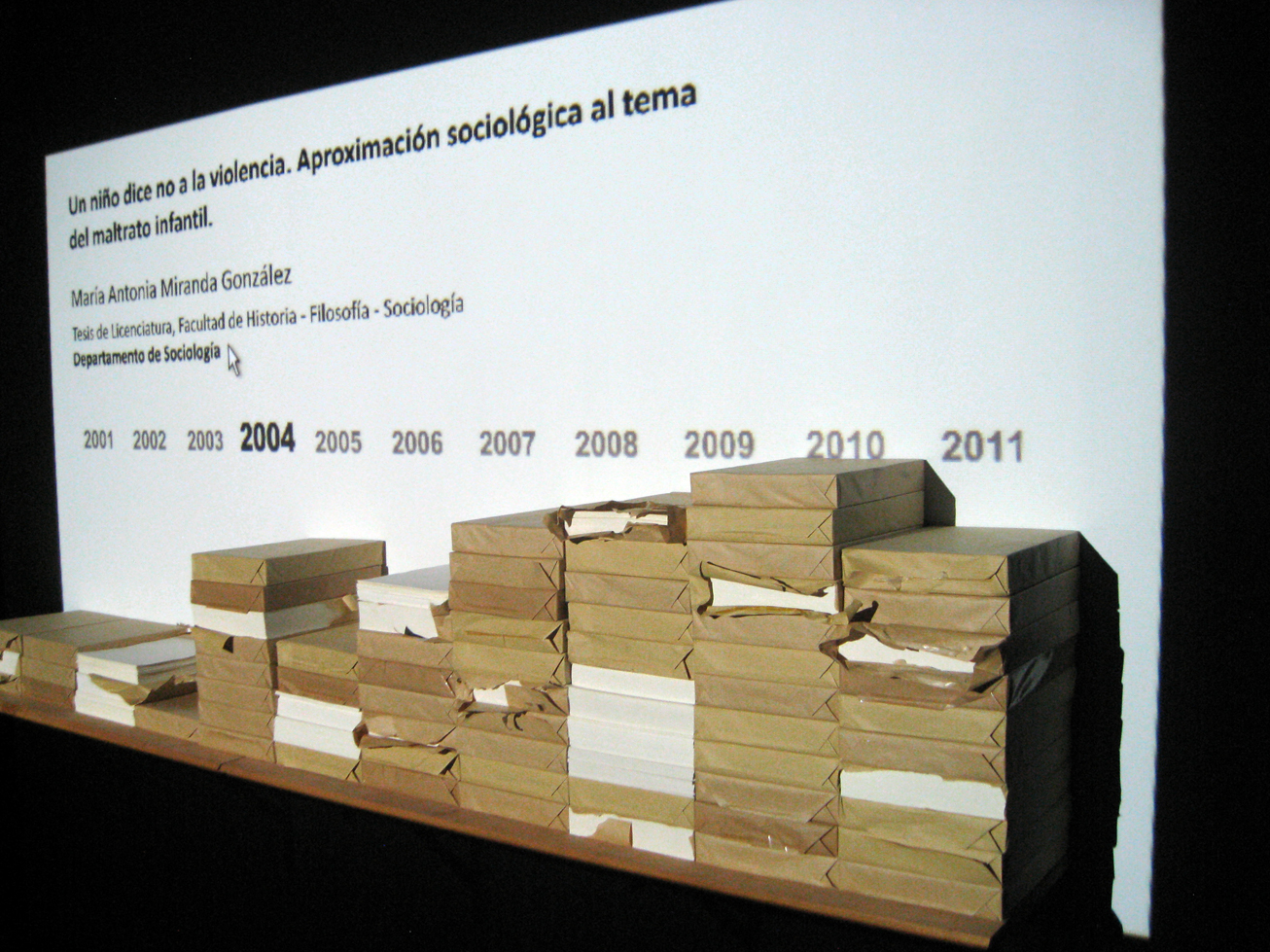
“Apuntes en el hielo,” 2011-12 by Celia-Yunior (Cuban artists Celia Irina Gonzalez Alvarez and Yunior Aguiar Perdomo).
The following information was provided on the label of the Celia-Yunior installation: “Bachelor’s, Master’s thesis and Ph.D. dissertations produced from year 2001 up to now and stored in the Department of Sociology at the University of Havana. Each pile of papers represents the amount of research carried out in one year.”

Whoa, is that a whole city constructed on the floor in photo #’s 2 & 3? If so, that is insanely cool!